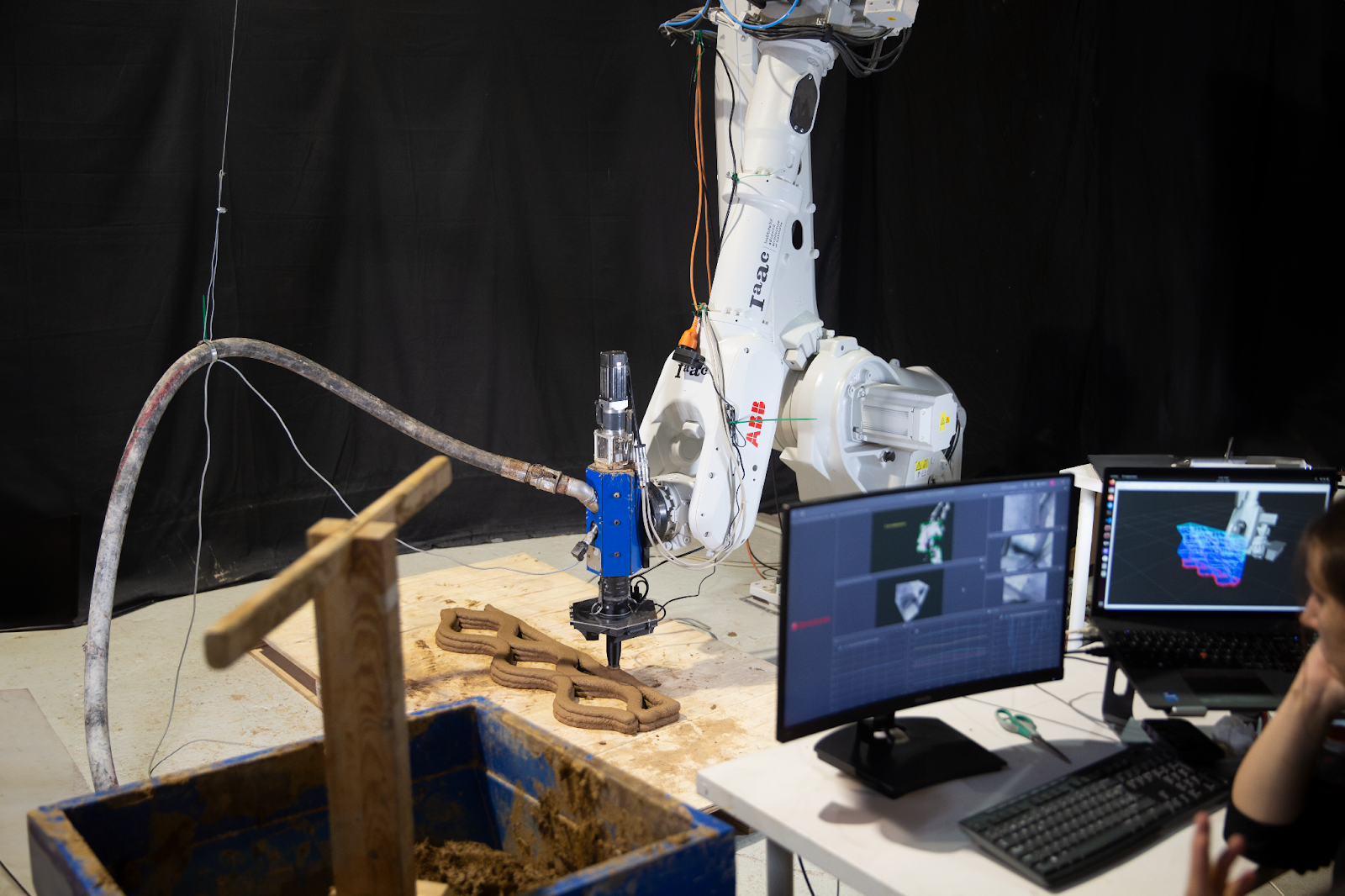3D printing in construction is revolutionizing the sector by addressing the challenges associated with productivity, complex geometry, and performative design. 3D printing also offers the opportunity to introduce more sustainable material such as one from natural or recycled sources. Unfortunately, those materials are non-homogeneous and exhibit complex behavior that usual 3d printing methods struggle with. Advanced AI control software coupled with state-of-the-art IOTsensors and 3D Scanners, can handle the diverse characteristics of natural and recycled materials, resulting in superior quality 3D printed objects.
This new technology will thus support the construction industry’s increasing focus on environmentally friendly practices in the use of sustainable materials (such as soil, ceramics, bioplastics, recycled plastics, recycled concrete or geopolymer), combined with 3D printing’s precision in material usage minimizes waste generation during construction processes, aligning with the EC goal of waste reduction and the long-term sustainability of the construction sector. This technology enables a more sustainable and responsible approach to construction, contributing to a greener future.
The objective of the Q3D: AI Quality control & correction for 3D Printing with recycled and natural materials project is focused on developing sensor and AI robot control technology that can effectively allow 3D printing to work with natural or recycled materials. The solution developed proposes an advanced automation technology that enables continuous, uninterrupted printing. This innovation possibly allows manufacturing companies to operate prints overnight, cutting production time and costs by approximately 50%. Fewer technicians will be needed to supervise machines (1 technician for 4 machines, or remote monitoring), enhancing operational efficiency. Improved print accuracy reduces material waste from printing errors, with waste levels dropping from 20% to 8% per print, thereby lowering both resource usage and energy consumption due to reduced prototyping needs. It Involved the integration of a system capable of reading the extrusion process, scanning the produced piece, determining the production issues, and controlling the printing robot to operate at an optimal speed and precision, resulting in high-quality printed objects.




